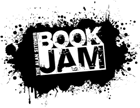Recently, we featured audiobook reviews from guest blogger Jana Warnell, an elementary school librarian in Montana. You can read her reviews of Clementine, The Thief, and The Ranger’s Apprentice: Ruins of Gorlan. She also shared with us how to hook reluctant readers with audio and on audiobooks and fluency. Check out more reviews and librarian insights from Jana at her blog, http://janasbooklist.blogspot.com/.
Today, Jana shares with us how audiobooks can assist students with reading comprehension.

I have covered hooking reluctant readers and increasing fluency using audio books. Now I am going to cover how audio books improve comprehension.
When I was in high school I was assigned a lot of “classics” to read. I really dislike classics. I disliked them back then and I dislike them today. We had to read a Shakespeare play. Ugh. I couldn’t make heads or tails of it. So I started reading it aloud to my mom, and she took turns reading it to me. It was like a light bulb clicked on for me. When I heard the story I understood the story. I am an auditory learner.
The school I am a librarian at uses the Accelerated Reader program. It is a very hard program for some kids because reading is not a strong point for them. So, even when they read some of the lower level books they have a hard time with comprehension. Luckily, I had some Playaways available. I asked the teachers to allow some of the lower students to use those. Wow. The scores for the students that used the Playaways increased dramatically. When they heard the story it made more sense to them.
I also used this method for my older son. He was assigned a book in class (Number the Stars) that was giving him problems. Our read aloud time was limited due to activities so I checked out the audio book. He was able to listen and read along, pass his tests and turn in a great final project. He wouldn’t have been as excited about any of the assignments that went along with the book if he didn’t understand what he was reading.
Audio books can also be a great way to bridge a gap between reading levels for kids. Sometimes they want to read a book leveled higher than they are ready for. Rather than tell them they cannot read it, provide the audio book for them. They will be able to follow along and understand what they are reading. This will also help them firmly move up into that reading level.
You need to remember that the first way you get kids interested in books is by reading aloud to them. Over and over and over. When they are older that doesn’t change. Their interest is peaked when they hear a book out loud. And their interest can be heightened even more with the use of professionally done audio books. Don’t stop because they are older!
What do you do to help your students’ comprehension? Have you seen gains since using audiobooks? Share your story here or at http://www.facebook.com/recordedbooksk12.
Filed under: Audiobooks and Education, ESL, K-12 Education | Tagged: comprehension, jana warnell, Literacy | 1 Comment »
 CLICK HERE.
CLICK HERE.


















